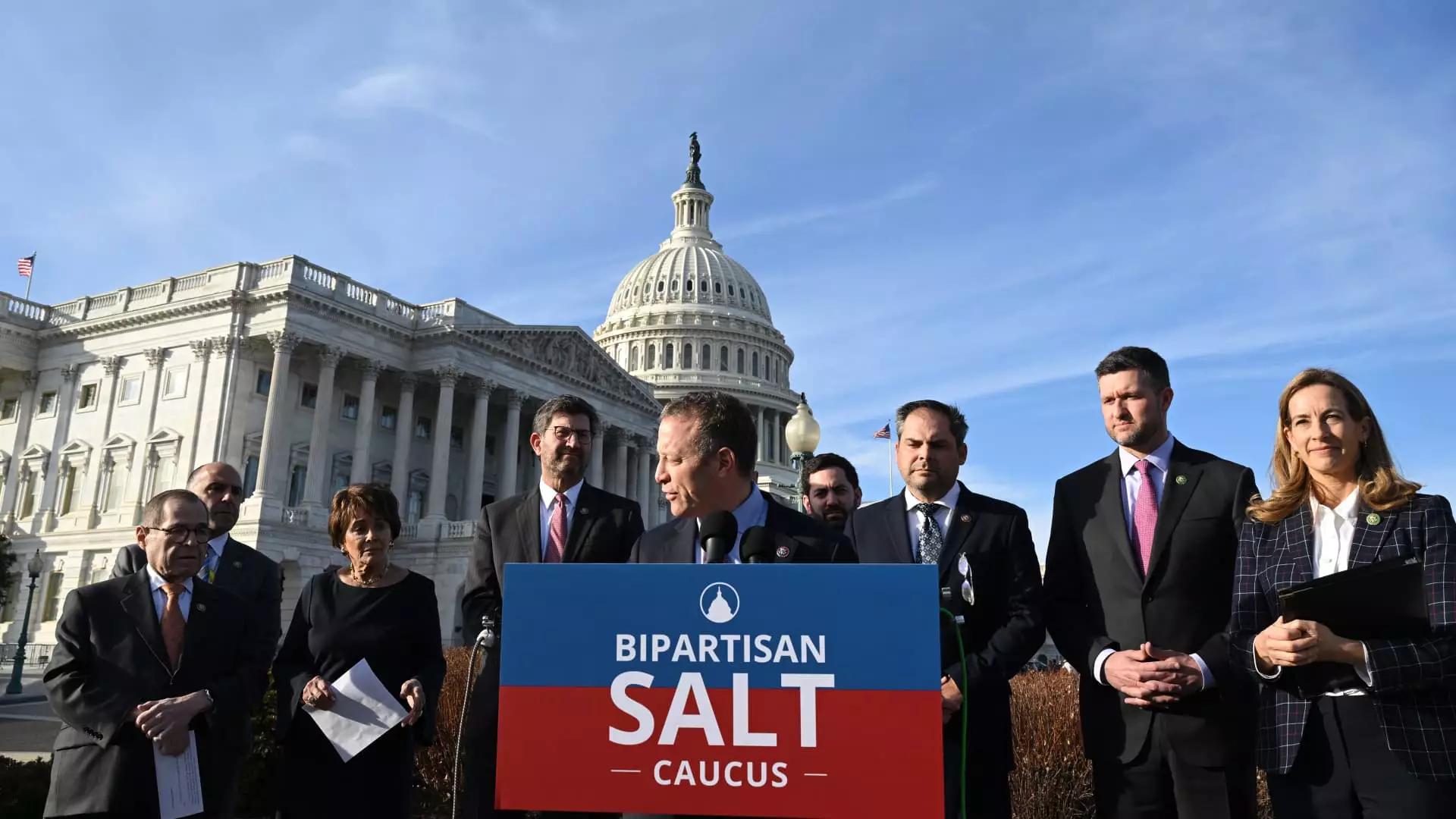As discussions heat up surrounding potential adjustments to tax laws under President Donald Trump’s proposed agenda, it’s essential to scrutinize the implications of these changes, particularly regarding the state and local tax (SALT) deduction cap. Introduced by the Tax Cuts and Jobs Act in 2017, the current $10,000 limit on SALT deductions was intended to streamline tax benefits but has inadvertently limited relief for millions while disproportionately favoring higher earners.
Initially, the SALT cap seemed like an innocuous reform, but as it looms towards its scheduled sunset in 2025, it has become a divisive topic among lawmakers from states with high taxes—California, New York, and New Jersey being at the forefront. These regions have a significant interest in raising the deduction limit, pointing to an uncomfortable reality: while ordinary taxpayers continue to grapple with financial burdens, the wealthier demographic appears poised to benefit from further adjustments.
Revisiting Trump’s Tax Promises
Despite having initially supported the SALT cap during his presidency, Trump’s recent shift in stance raises questions about political integrity and genuine governance. His commitment to “getting SALT back” is a glaring example of how politicians can reverse course based on shifting public sentiment and lobbying pressure. It also underscores a troubling reality: tax reforms often seem designed to cater to the affluent instead of addressing systemic inequities affecting everyday Americans.
The reality is that in an environment where around 90% of filers utilize the standard deduction due to high thresholds for itemization, political decisions surrounding SALT primarily benefit those above the $200,000 income level. Such an approach not only widens the gap between the upper-middle class and those struggling to make ends meet but also perpetuates a system that prioritizes wealth accumulation over equitable taxation.
The Consequences of Favoring the Wealthy
Consider the implications of a proposed increase in the SALT deduction cap for married couples filing jointly from $10,000 to $20,000. While it may appear as a boon to some, the reality is that such changes largely benefit households earning well over $200,000 per year, with the richest among us likely reaping the most substantial rewards. The Tax Policy Center’s analysis indicates that households earning $430,000 or more would see nearly three-quarters of the benefits, underscoring the targeted nature of these tax proposals.
Shifting the tax burden in favor of higher income brackets raises ethical questions about who truly deserves relief. Should the focus of tax reform be on enhancing financial stability for those at the top, or should it prioritize support for middle and lower-income families who need it most? Tax policy should ideally promote equity and fairness, yet these proposed reforms seem to perpetuate a cycle of advantage for those already privileged.
The Geographic Divide
The geographic implications of the SALT cap are another pressing concern. An analysis indicates that many of the congressional districts impacted by this limitation are concentrated in a handful of states. This raises a fundamental question about representation: if lawmakers are negotiating tax benefits largely from states like California or New York, are they adequately serving the interests of constituents from lower-income areas across the country? The inherent tendency for tax reforms to focus on higher-income states reveals deep-seated inequalities that exist within our national tax framework.
In this environment, one cannot help but wonder if economic policies are genuinely aimed at holistic improvement or merely at placating affluent voters and political donors. The restrictive nature of the SALT cap has pitted states against one another, potentially sacrificing the integrity of a fair tax system in favor of political expedience.
Challenging the Narrative of Tax Reform
As Trump administration officials and several lawmakers promote these potential tax changes, it’s crucial for citizens to critically examine the underlying motivations and the far-reaching consequences of such adjustments. Tax reform must not represent a vehicle for widening existing inequities or fostering an even more regressive system that privileges wealth over the well-being of the majority.
The discussion should foster discourse on fairness and equity, holding leaders accountable for the effects of their decisions on everyday citizens. As we move toward 2025, it is imperative to engage in meaningful conversations about what fair taxation looks like, rather than passively accepting reforms that primarily serve the interests of the wealthy. If the focus remains solely on enhancing privileges for higher earners, we risk losing sight of the fundamental values of equity and community support that should underpin our tax code.

Leave a Reply